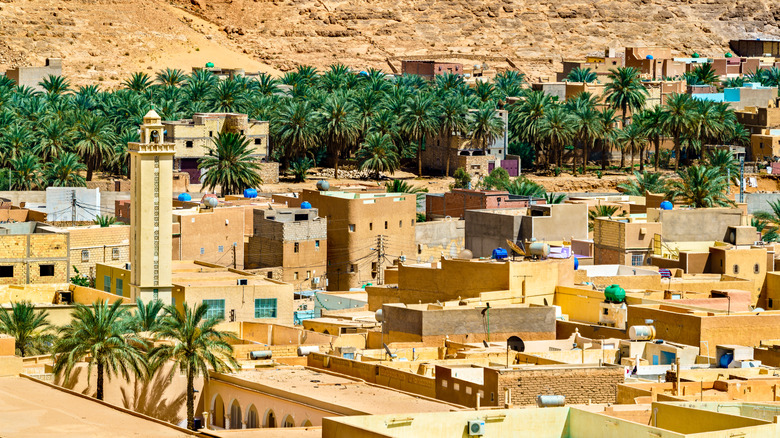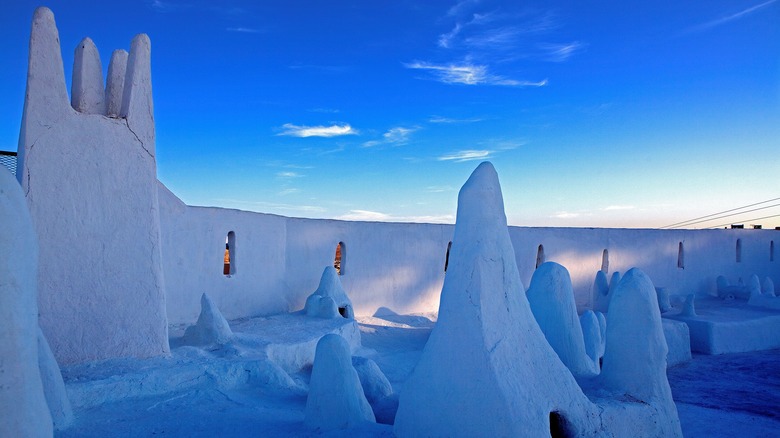Inside The Fortified Cities Of The M'Zab Valley
On the outskirts of the Sahara Desert, there are a network of cities nearly a millennium old. Known as the Pentapolis, these five fortified cities are located in Algeria's M'Zab Valley, according to BBC Travel. The oldest of the five fortified cities, or ksours, is El-Atteuf, which was founded in 1012. The other four towns are Melika, Bounoura, the Holy City of Beni-Isguen, and Ghardaïa. The last was built in 1350, according to the United Nations Educational, Scientific and Cultural Organization (UNESCO).
Each of the five cities is built on a hill around a central mosque that also acts as a fortress, watchtower, grainery, and weapons store, according to Amusing Planet. The rest of the buildings are pastel, cube-shaped homes that are arranged around the mosque in a series of concentric circles. The homes are built closely together and connected by narrow alleyways and covered walkways. They are designed to facilitate a communal, egalitarian way of life that has persisted nearly unchanged for nearly a thousand years. The buildings were all made of local materials, and their design has continued to influence contemporary architecture and town planning because of its simplicity and integration with the surrounding environment, according to UNESCO. The cities were granted UNESCO World Heritage site status in 1982.
An unchanged way of life
The M'Zab cities were established by the semi-nomadic Mozabites, according to BBC Travel. They first began exploring the valley in the eighth century and chose to stay and adapt to the harsh desert climate. For example, they planted palm trees on the floor of the valley to create a cool oasis during the summers. Eventually, they converted to the Ibadi School of Islam, and are still one of three significant Ibadi communities in North Africa.
The more than 360,000 contemporary residents of the Pentapolis still live the same way they did centuries ago. "Apart from electricity coming in the late 1950s, daily life in the historic centers has changed little since the cities were founded, and that's how the people like it," local guide Khaled Meghnine told BBC Travel.
Beni Isguen is the most traditional of the towns, and, until recently, only residents were allowed in the city after dark, according to Amusing Planet. The women there cover their bodies and face with a large cloth called a haik that only reveals one eye, according to Johathan Oakes' Algeria Travel Guide (via Amusing Planet.)

